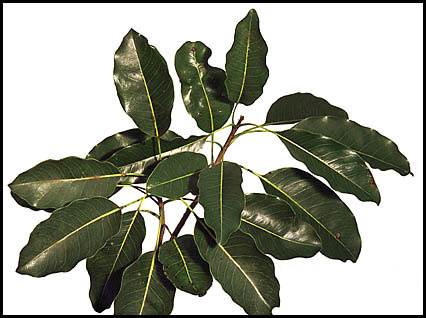Mastic
Sideroxylon foetidissimum
Family: Sapotaceae
Natural History

Mastic also goes by several other common names - false mastic, jungle plum, and wild olive. Mastic grows in coastal areas of Florida, the Bahamas, and West Indies. In Florida, mastic is most common in the Keys and south Florida but can be found on the east coast as far north as Volusia County.
Mastic has a small, edible fruit is bitter and somewhat acidic but is enjoyed by some people. The fleshy fruit has a gummy, white sap that glues a person's lips together after eating a couple of the fruits. Some people find the leaves, bark, flowers, or fruits to have an unpleasant odor.
The heartwood is heavy, strong, and bright orange and the sapwood is thick and yellow. Mastic is a valuable for its timber in the Bahamas and West Indies and has been used for cabinetwork and boat timbers in the United States. In this country, however, mastic holds no real commercial value.
Mastic has the potential to make an excellent shade tree but is not for the impatient homeowner. It can take 100 years or more for mastic to mature to its tallest heights.
